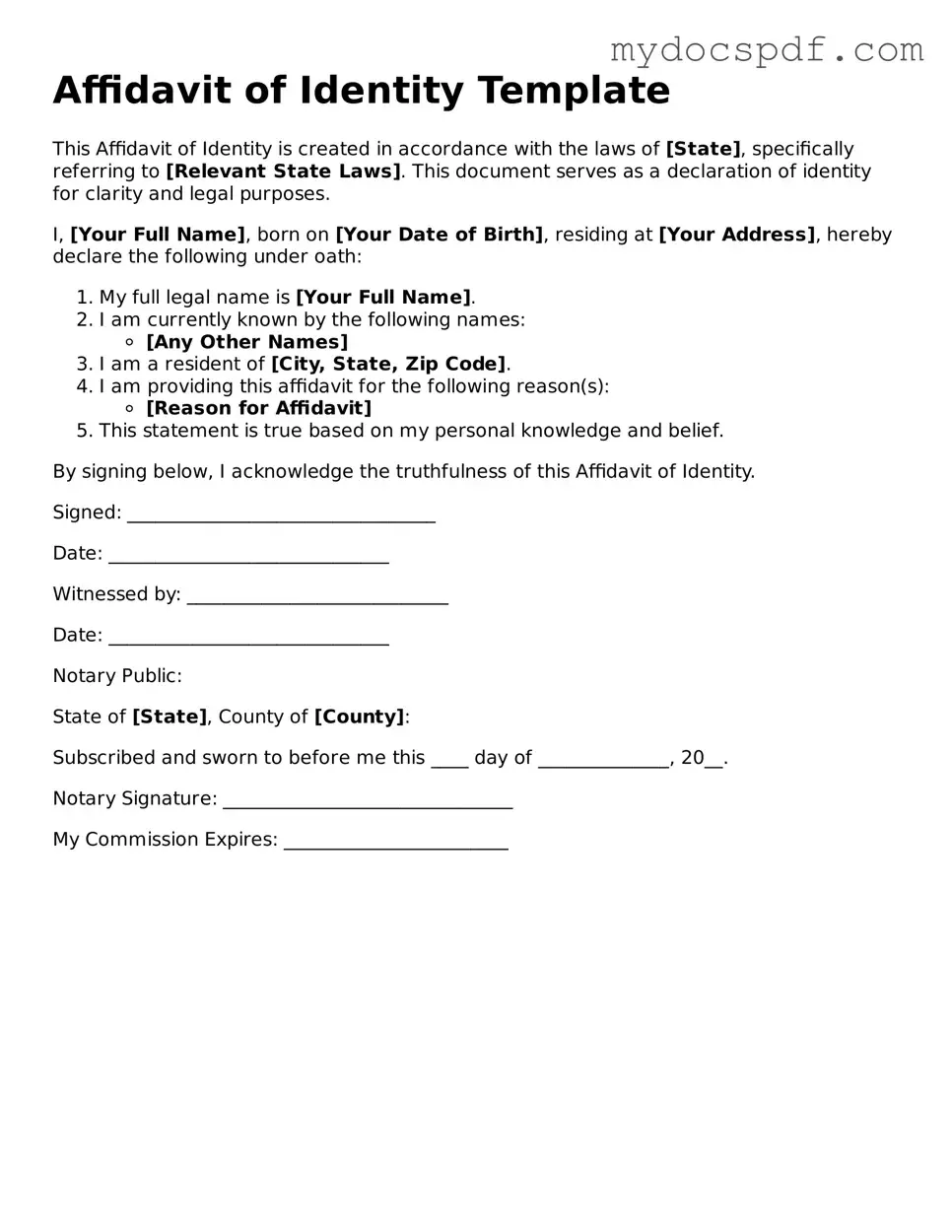Affidavit of Identity Template
This Affidavit of Identity is created in accordance with the laws of [State], specifically referring to [Relevant State Laws]. This document serves as a declaration of identity for clarity and legal purposes.
I, [Your Full Name], born on [Your Date of Birth], residing at [Your Address], hereby declare the following under oath:
- My full legal name is [Your Full Name].
- I am currently known by the following names:
- I am a resident of [City, State, Zip Code].
- I am providing this affidavit for the following reason(s):
- This statement is true based on my personal knowledge and belief.
By signing below, I acknowledge the truthfulness of this Affidavit of Identity.
Signed: _________________________________
Date: ______________________________
Witnessed by: ____________________________
Date: ______________________________
Notary Public:
State of [State], County of [County]:
Subscribed and sworn to before me this ____ day of ______________, 20__.
Notary Signature: _______________________________
My Commission Expires: ________________________
